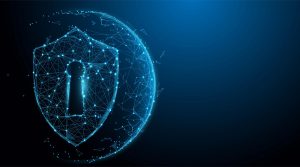The world of blockchain technology has given rise to numerous innovations, and one of the most prominent among them is Non-Fungible Tokens (NFTs). NFTs have gained significant popularity as unique digital assets that can represent ownership of various items like artwork, collectibles, and virtual real estate. As the NFT ecosystem evolves, the need for standardized token formats has become apparent. In this article, we will explore different NFT token standards and their impact on security.
Understanding NFT Token Standards
NFT token standards define the rules and specifications that govern the creation, ownership, and transfer of non-fungible tokens. The most well-known NFT token standard is ERC-721, which was introduced by Ethereum. ERC-721 tokens are unique and indivisible, allowing for the representation of one-of-a-kind assets. Another popular standard is ERC-1155, which enables the creation of both fungible and non-fungible tokens within a single contract.
Apart from ERC-721 and ERC-1155, there are other emerging NFT token standards in the blockchain space. These standards aim to address specific use cases or provide additional functionalities, such as royalty distribution or decentralized storage. Examples include ERC-998, ERC-9981, and ERC-721x. Each standard comes with its own set of features and considerations.
Security Considerations for NFTs

As NFTs gain mainstream adoption, it is crucial to address the security challenges associated with these digital assets. Smart contract vulnerabilities pose a significant risk, as they can be exploited to compromise the ownership or value of NFTs. It is essential for developers to conduct thorough audits and security assessments to identify and mitigate potential vulnerabilities in their smart contracts.
Wallet security is another critical aspect to consider when dealing with NFTs. Users must safeguard their private keys and employ secure wallet solutions to prevent unauthorized access to their digital assets. Additionally, phishing attacks targeting NFT owners have been on the rise. Users should exercise caution when interacting with suspicious links or providing sensitive information to unknown sources.
Role of NFT Token Standards in Enhancing Security
NFT token standards play a vital role in enhancing security within the ecosystem. Firstly, standardized token formats facilitate interoperability and compatibility between different platforms and marketplaces. This allows users to seamlessly transfer their NFTs across various applications, reducing the risk of asset loss or fragmentation.
Furthermore, token standards enable verification and trust. By adhering to a recognized standard, NFT creators and sellers can provide transparency and authenticity to potential buyers. Standardized metadata structures and provenance information enhance the trustworthiness of NFTs, making
it easier for collectors and investors to verify the origin and history of an asset.
Lastly, the establishment of token standards relies on community consensus. Developers, artists, and users collaborate to define and refine these standards, ensuring that the best security practices are integrated into the ecosystem. This community-driven approach fosters innovation while maintaining a strong focus on security.
The Importance of Open Standards
Open standards have a significant impact on the NFT ecosystem. They promote inclusivity and foster collaboration among various stakeholders. Open standards ensure that NFTs remain accessible and can be utilized by developers, artists, and collectors across different blockchain platforms. This interoperability strengthens the overall security of the ecosystem by reducing the risk of isolated vulnerabilities or centralization.
Moreover, open standards encourage competition and innovation. Developers can build upon existing standards and create new ones to address emerging needs and requirements. This dynamic environment pushes the boundaries of what is possible with NFTs while maintaining a strong emphasis on security.
Balancing Innovation and Security
In the rapidly evolving world of NFTs, striking a balance between innovation and security is crucial. While it is essential to explore new token standards and functionalities, it is equally important to ensure that security measures are robustly implemented. Regular security audits, community-driven discussions, and educational initiatives can contribute to a more secure NFT ecosystem.
Future Trends in NFT Token Standards
The NFT space is continuously evolving, and we can expect further developments in token standards. As the industry matures, there will be a greater focus on refining existing standards and addressing emerging challenges. The integration of additional security features, such as multi-signature authentication or decentralized identity solutions, may become more prevalent. These advancements will enhance the overall security and trustworthiness of NFTs.
Best Practices for Smart Contract Development
- Code Reviews: Thorough code reviews are critical to smart contract development. Peer review by experienced developers can help identify coding mistakes, logic errors, or potential security vulnerabilities. It is essential to have multiple sets of eyes scrutinize the codebase to ensure quality and security.
- External Audits: Engaging third-party security auditors who specialize in smart contract auditing can provide an unbiased and expert assessment of the code. These external auditors bring a fresh perspective and extensive experience in identifying potential vulnerabilities or weaknesses that may have been overlooked during internal reviews.
- Testing Methodologies: Rigorous testing is crucial to smart contract development. Developers should employ a combination of unit tests, integration tests, and functional tests to verify the contract’s behavior and identify any issues. Test coverage should encompass both normal and edge cases to ensure the contract functions correctly under various scenarios.
- Follow Industry Standards: Adhering to industry best practices and standards for smart contract development is essential. Standards such as the Ethereum Virtual Machine (EVM) best practices or the Consensys Smart Contract Best Practices provide guidelines on secure coding, gas efficiency, and other important considerations.
- Leverage Secure Libraries and Frameworks: Utilizing well-established and audited libraries and frameworks can significantly enhance the security of smart contracts. These libraries have undergone thorough scrutiny and are generally considered safer to use than writing code from scratch. However, it is still essential to review and validate the libraries used in the contract to ensure they align with the project’s security requirements.
- Upgradability Considerations: If implementing upgradability features in smart contracts, careful attention must be given to the associated security risks. Upgradable contracts should undergo additional audits and testing to ensure that upgrade mechanisms are secure and cannot be exploited to compromise the contract’s integrity.
By following these best practices, developers can enhance the security and reliability of smart contracts, reducing the risk of vulnerabilities and potential attacks.
NFT Marketplaces and Security
NFT marketplaces have become the go-to platforms for buying, selling, and trading digital assets. These marketplaces offer a vibrant marketplace for creators, collectors, and investors to engage in the world of non-fungible tokens. However, it is essential to recognize that not all NFT marketplaces are created equal when it comes to security. Choosing a reputable and secure marketplace is of paramount importance to protect your investments and digital assets. Let’s explore the key factors to consider when evaluating the security of NFT marketplaces.
- Reputation and Trustworthiness
When venturing into the world of NFTs, it is crucial to choose marketplaces that have established a solid reputation and gained the trust of the community. Look for marketplaces that have been around for a while and have a track record of successful transactions. Research the marketplace’s history, user reviews, and testimonials to gauge their credibility. Opting for well-known and reputable platforms can significantly reduce the risk of encountering security issues.
- Secure Authentication
One of the fundamental aspects of a secure NFT marketplace is the implementation of robust authentication mechanisms. A trustworthy marketplace should require strong user authentication, such as two-factor authentication (2FA) or biometric authentication, to ensure that only authorized users can access their accounts. These additional layers of security make it significantly harder for hackers to gain unauthorized access to user accounts and assets.
- Escrow Services
Escrow services provide an additional layer of protection for both buyers and sellers in NFT transactions. They act as intermediaries, holding the assets or funds until the agreed-upon conditions of the transaction are met. When choosing an NFT marketplace, look for platforms that offer escrow services, ensuring that the buyer’s funds are held securely and released only upon successful completion of the transaction. This helps to mitigate the risk of fraud or scams in the marketplace.
- Decentralized Storage Solutions
Centralized storage solutions pose potential security risks as they create a single point of failure. Instead, consider NFT marketplaces that leverage decentralized storage solutions. These marketplaces store NFT data on decentralized networks, such as IPFS (InterPlanetary File System) or blockchain-based storage networks. Decentralized storage enhances security by distributing the data across multiple nodes, reducing the risk of data loss or tampering.
- Community and Developer Engagement
Active community involvement and developer engagement are indicators of a healthy and secure NFT marketplace. Look for marketplaces that foster open communication channels, provide timely support to users, and actively address security concerns. Regular updates, bug fixes, and security patches are crucial to maintaining a secure platform. The presence of a dedicated community and a proactive development team signifies that the marketplace takes security seriously and prioritizes user protection.
- User Education and Awareness
A reputable NFT marketplace understands the importance of user education and awareness. They provide educational resources, guidelines, and best practices to help users navigate the platform securely. Look for marketplaces that offer comprehensive guides on securing wallets, recognizing phishing attempts, and protecting personal information. Empowering users with the necessary knowledge to stay safe and make informed decisions is an essential aspect of a secure marketplace.
Conclusion
NFT token standards play a pivotal role in shaping the security landscape of the NFT ecosystem. They provide a framework for interoperability, trust, and community collaboration. By adhering to standardized token formats, developers, artists, and users can enhance the security of NFTs while exploring innovative use cases. However, it is important to remain vigilant and address emerging security challenges as the NFT space continues to evolve.






